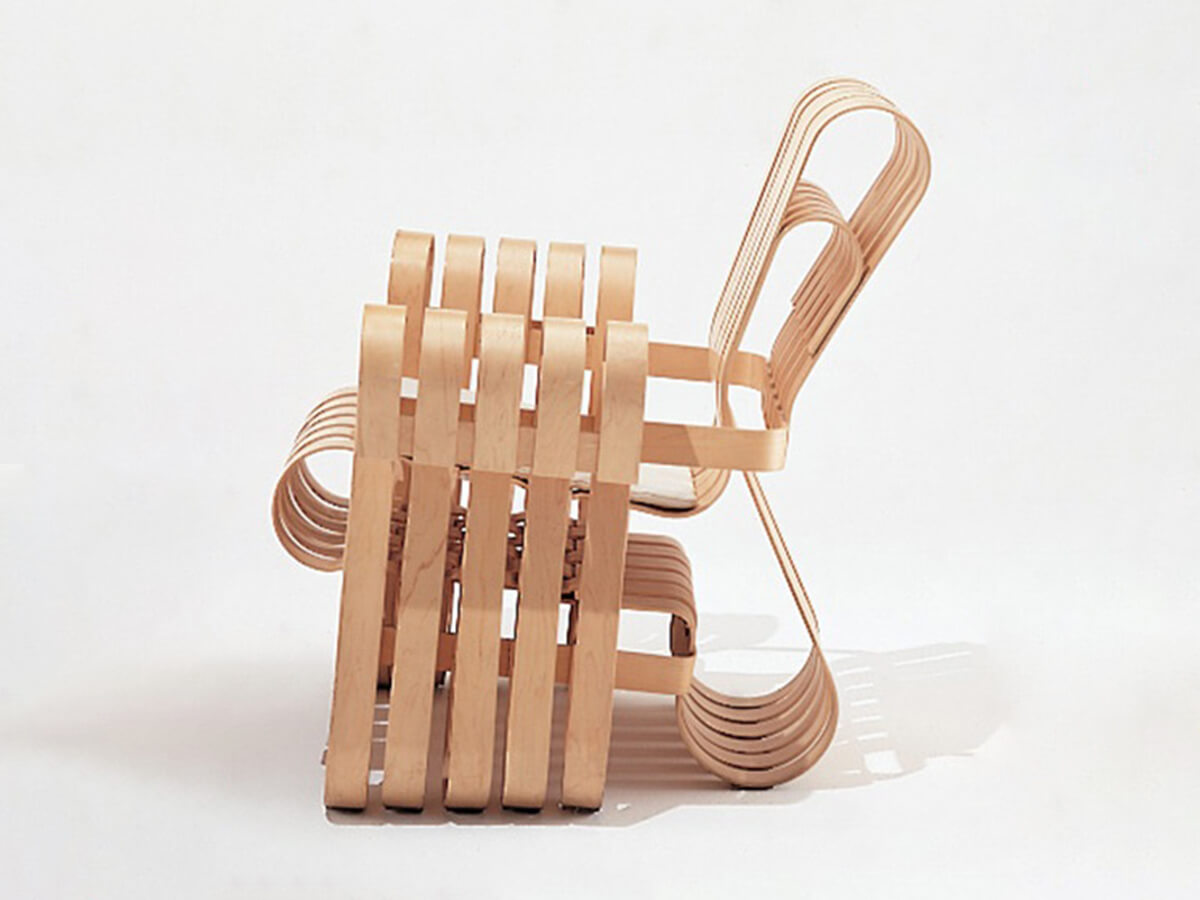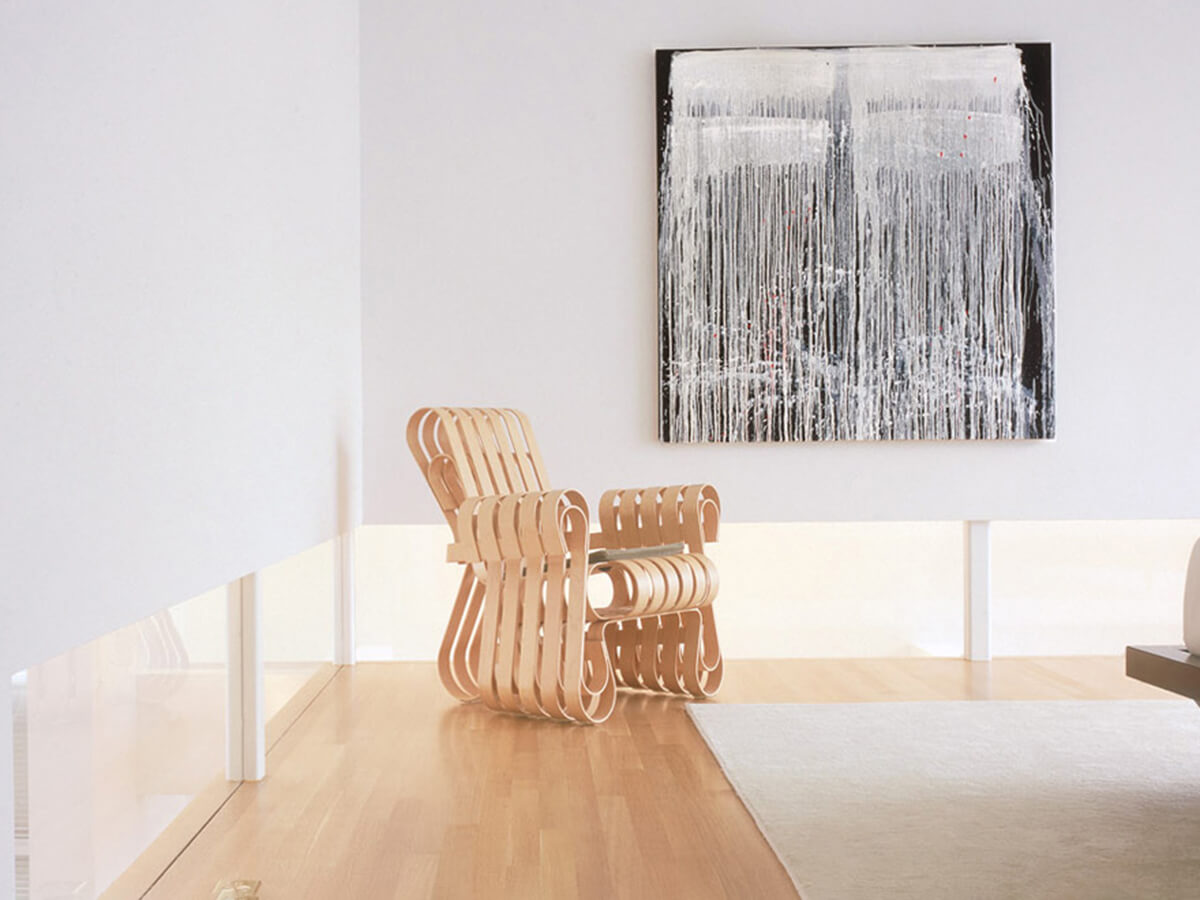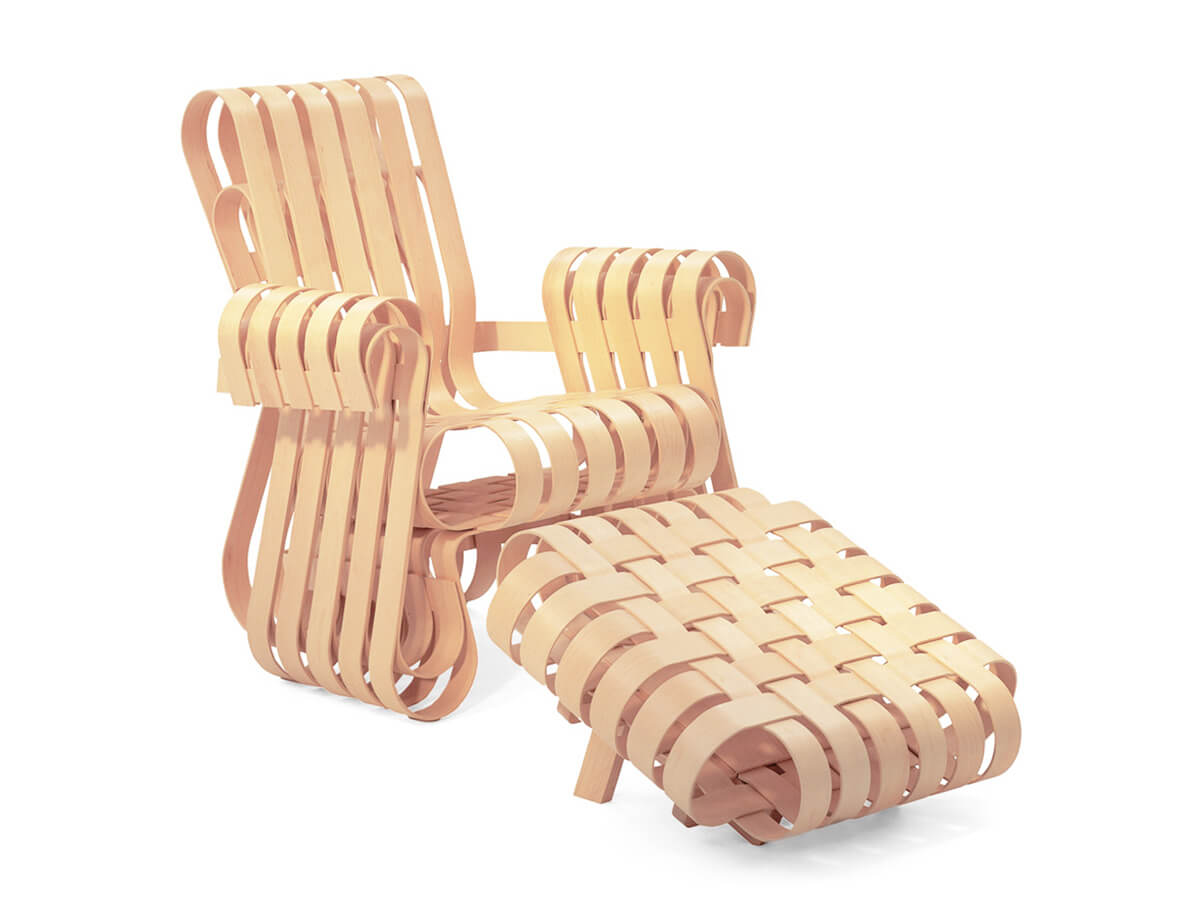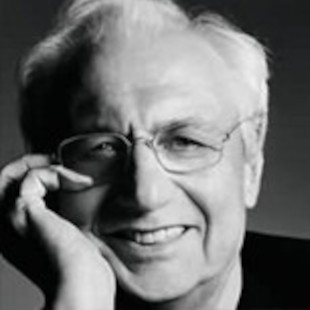Knoll
Power Play Armchair
Without Ottoman
Price € 20.764,00
Power Play was born from Frank Gehry's idea of creating a furniture collection inspired by apple boxes. Under this aegis a collection of chairs, small armchairs, armchairs, coffee tables and more was born, all rigorously distinguished for their unconventional elegance and style. The design is structured by the union of strips of natural maple glued together without the aid of external supports. In a complete assortment of products and sizes, the Gehry armchair is equipped with a footrest with folding legs which, when open, give it an inclined position. Power Play fits well in the living rooms of the house, but can still furnish other spaces according to taste.
W.79 x D.77 x H.83 cm
Seat Height 41 cm
Armrest height 60 cm
Salvioni Design Solutions delivers all around the world. The assembly service is also available by our teams of specialized workers.
Each product is tailor-made for the personal taste and indications of the customer in a customized finish and that is why the production time may vary according to the chosen product.
To discover the full range of services available, visit our delivery page.
Suggested versions (2)
Select
Select
Select
Landed in the United States at the beginning of the ‘30s, Hans Knoll, a young German-born son of a furniture-maker in Stuttgart, proposed to import into the new continent the modern European design, contemporary heritage of the Bauhaus. Died prematurely, his work was continued by his wife, Florence Knoll, who succeeded in establishing lasting partnerships with some of the greatest exponents of the modernist movement. Few years later the Knoll Associates was founded. Today, Knoll is not only a company of re-selling historic furnishings of great artistic value, but continues to innovate by offering creations of the major international design brands both in the home area and in the office furnitures sector.Read more
Designed by
Frank Gehry
Frank O. Gehry (1929-) is an American architect of Canadian origins, the greatest exponent of the current of Deconstructivism. His "impossible buildings" leave anyone who observes them speechless, lost in the infinite game of disjointed volumes and apparently random geometries, disoriented by an illegible game of curved and oblique lines. A peculiar and amazing poetics, perfectly expressed in works such as the Guggenheim Museum in Bilbao, the Vitra Design Museum in Weil am Rhein and the Wall Disney Concert Hall in Los Angeles, which earned him the victory of the Pritzker Prize in 1989, the highest world recognition for an architect. He is the bearer of an equally surprising taste for unusual and apparently poor materials, both in architecture and in his few design projects, made with Knoll and Vitra, where he gives life to furniture made with cardboard or with thin strips of maple wood.Read more



